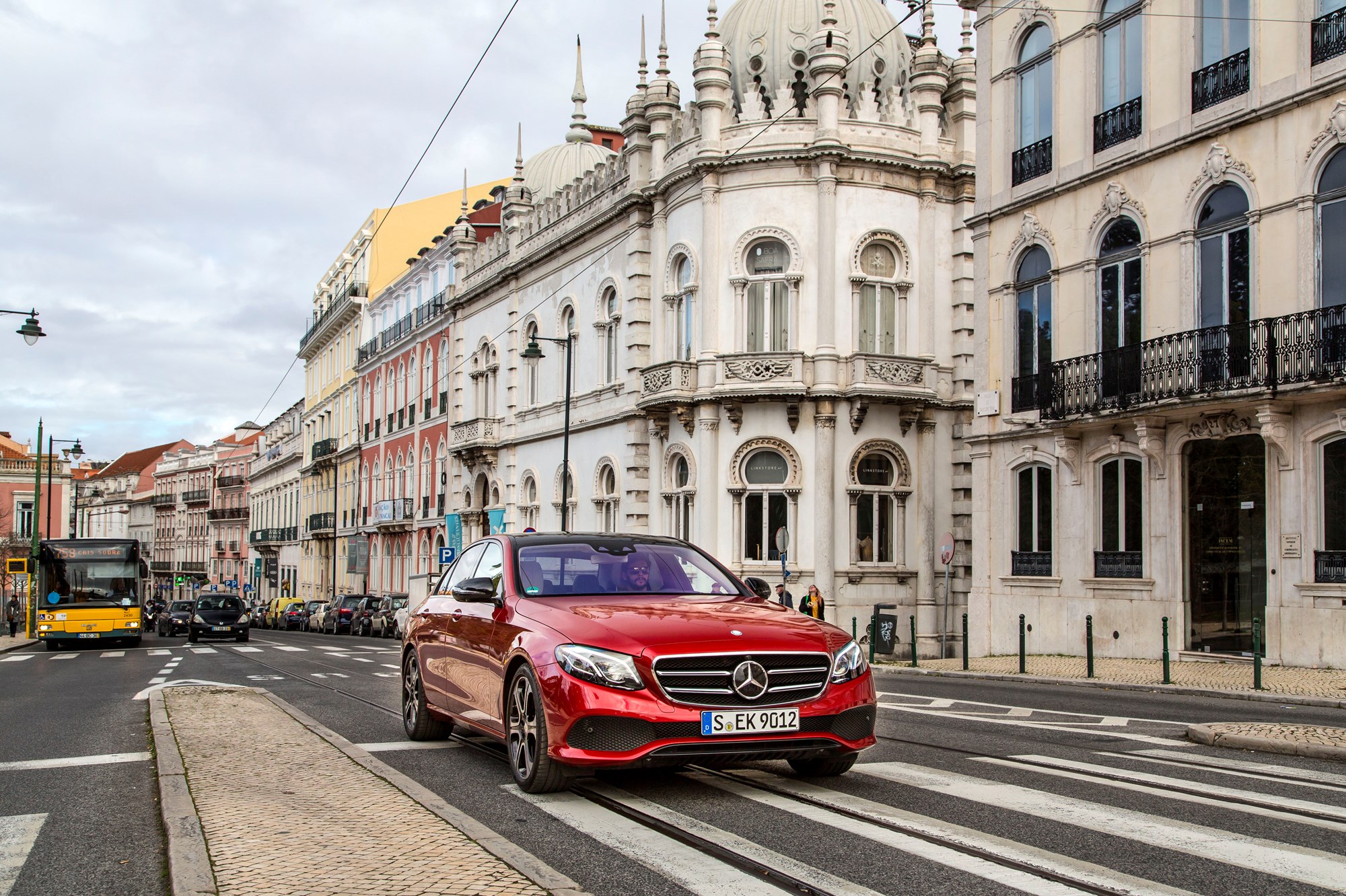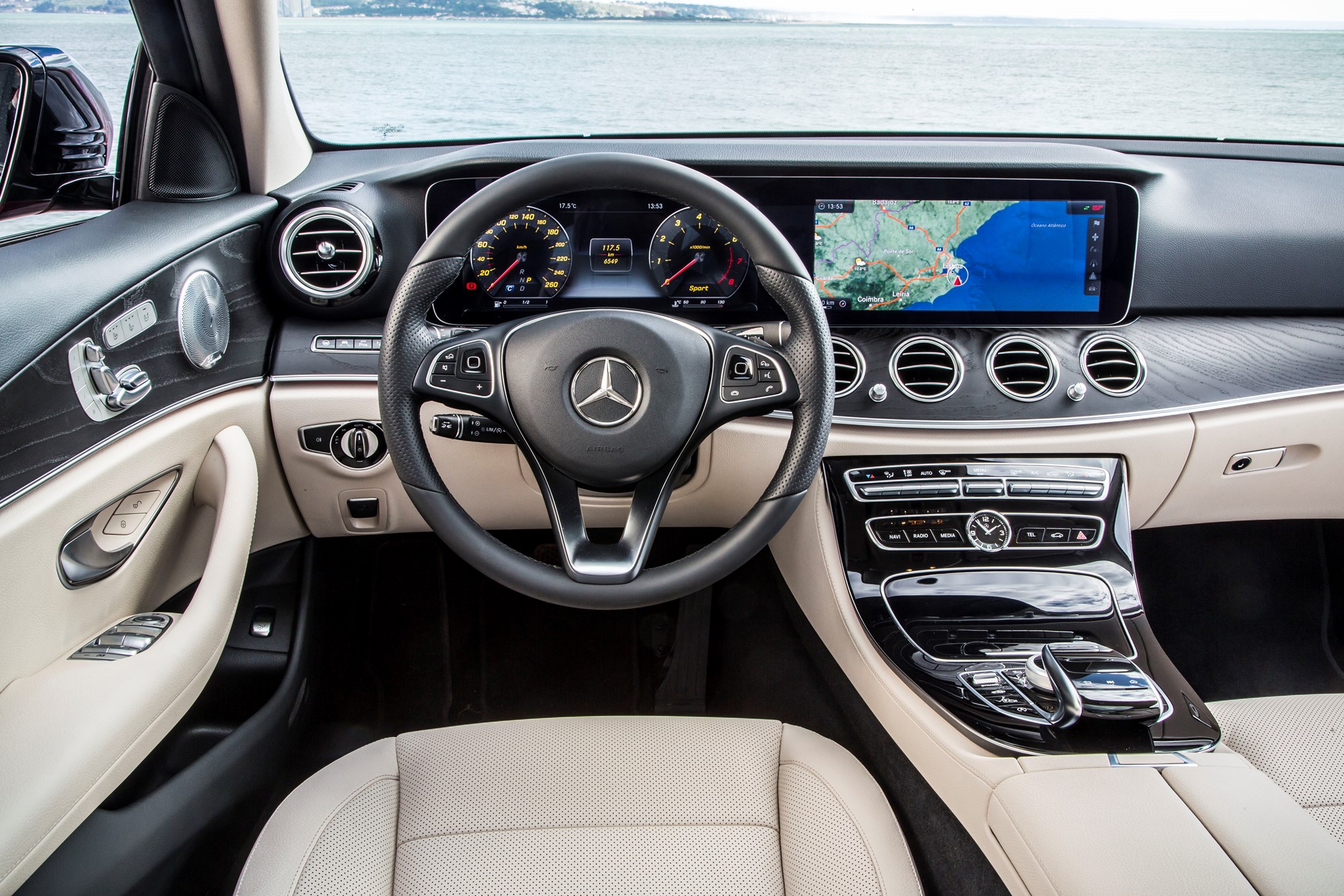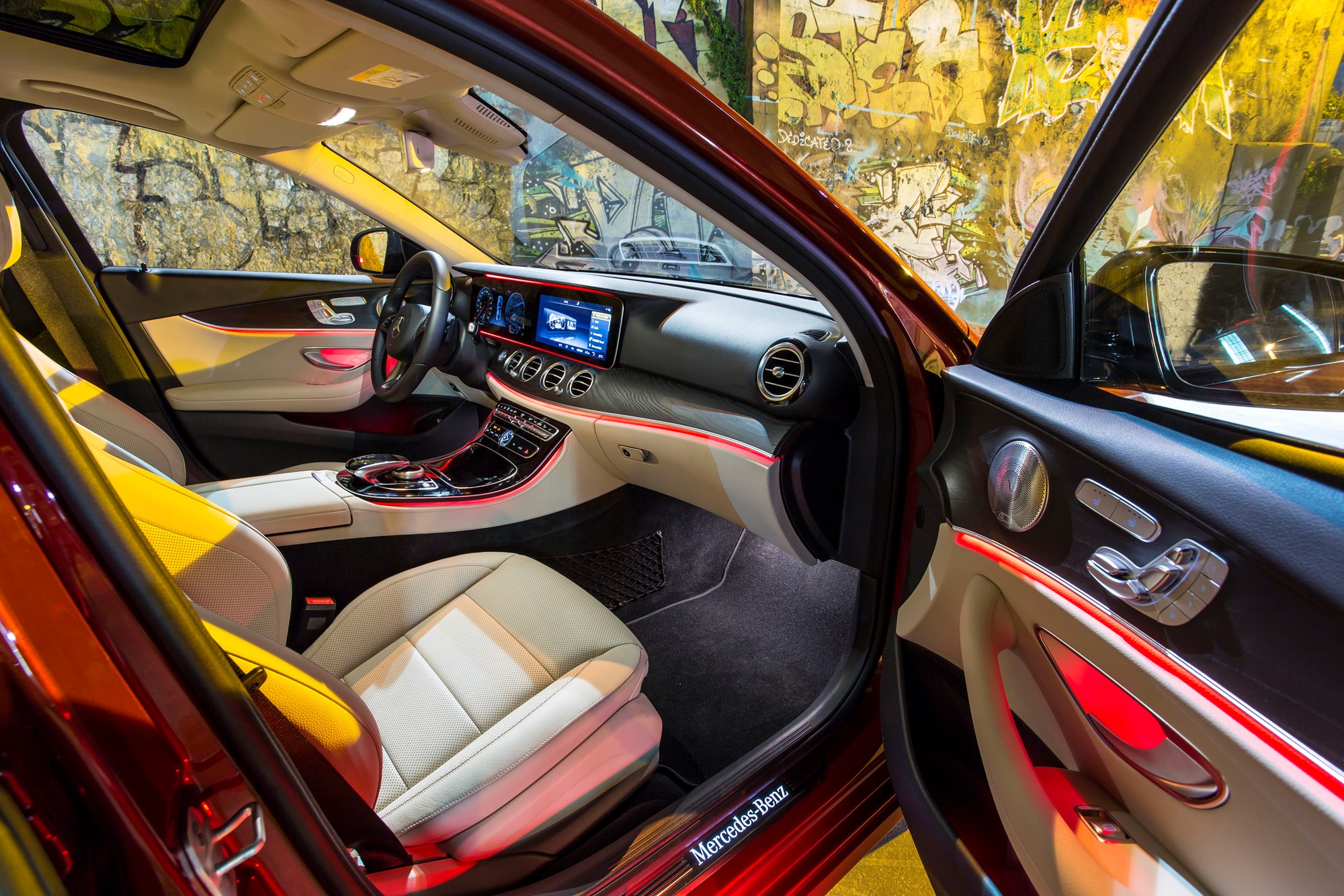Mercedes business sedan is as close as the brand has to self-drive car thanks to new technology
When Mercedes-Benz says the all-new E-Class sedan is a technological advancement of nearly two decades - in just seven years - it’s not hyperbole.
Revealed at last week’s Geneva motor show, and launched to the international media a few days later in Portugal, the medium sedan is a leap ahead in not only technology but design.
It goes on sale in Europe next month and New Zealand with get three petrol models (the E200, E300 and E400) and two diesel – the E220d and E350d.
Initial models to arrive in New Zealand will be the E200, 220d and 350d in July and around September we will get the E300 and 400 that will be Mercedes-Benz big sellers Downunder. Next year the E 350 e (electric plug-in hybrid) will go on sale in New Zealand.
 Prices of the current E-Class in NZ are from $114,000, but expect an increase due to the increased technology in the car.
Prices of the current E-Class in NZ are from $114,000, but expect an increase due to the increased technology in the car.
Sitting between the top selling C-Class and luxury S-Class sedan, the E-Class is marketed by Mercedes-Benz as a “business limo” and combines features from both those cars. It has the S-Class style dual screen integrated into the dash and the C-Class front grille.
And when it comes the business end, the E-Class combines all the high tech gadgets you’d expect for a company vehicle. There’s a near autonomous driving system called Drive Pilot, touchpads on the steering wheel that allow you to swipe through the infotainment functions, Car Play so your smartphone can be linked to the second screen and fantastic massaging seats that would help after a stressful day in the office.
Mercedes-Benz head designer, Dr Gorden Wagener told the Australasian motoring media during an interview at Geneva, that the E-Class sedan “is a jump of more than one generation, more like two generations. … It is a 20 year, two decade, leap”.
 The Drive Pilot system is Mercedes’ semi-autonomous driving system that works by driving at the road speed, keeping a safe distance to the vehicles in front, braking and accelerating by itself and now, changing lanes by itself.
The Drive Pilot system is Mercedes’ semi-autonomous driving system that works by driving at the road speed, keeping a safe distance to the vehicles in front, braking and accelerating by itself and now, changing lanes by itself.
If you hold down the indicator stork for more than two seconds, and the lane is clear, the E-Class will move by itself, without any input from the driver.
Board member, Dr Thomas Weber, told the Australasian media during an interview in Lisbon, Portugal that in four years the company will have its first self-drive car available.
“Drive Pilot is the … next big step for full autonomy,” said Dr Weber.
“By 2020 we are close to (full autonomy) those lays the question what does full autonomy mean.”
 Currently the E-Class will only let you have your hand off the steering for close to 2 minutes. We tested it on the motorway outside of Lisbon and my colleague had his hands off the wheel for 1m46seconds before the car took action.
Currently the E-Class will only let you have your hand off the steering for close to 2 minutes. We tested it on the motorway outside of Lisbon and my colleague had his hands off the wheel for 1m46seconds before the car took action.
Drive Pilot has 30 second intervals of first visual then audible warnings before the car decelerates by itself, and at 60km/h emergency warning lights kick in then the car will stop.
New to the line up is a new 220 2-litre (143kW/400Nm) diesel engine, while we get the 300 2-litre (180kW/370Nm) petrol for the first time.
The E400 3-litre (245kW/480Nm) gets 4Matic (Mercedes’ all-wheel-drive system) for the first time in our market.
But unfortunately for Australasian, we don’t get the new self-parking system – yet. Using a smartphone app, you can exit your car and park it in a garage, parallel or perpendicular spots and unlike some car brands, the car can exit a tight car spot.
The E-Class will be competing against BMW’s 5 Series (and in some segments the 7 Series) and Audi’s A5 and A7 in our markets.
But what is revelvant for the German brand and for its future customers is the way this technology will be integrated into upcoming models not only in the E-Class range but in other cars in Mercedes-Benz line up.











